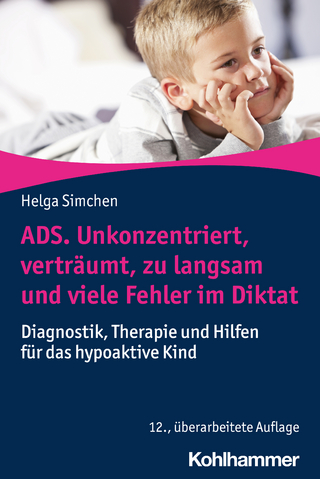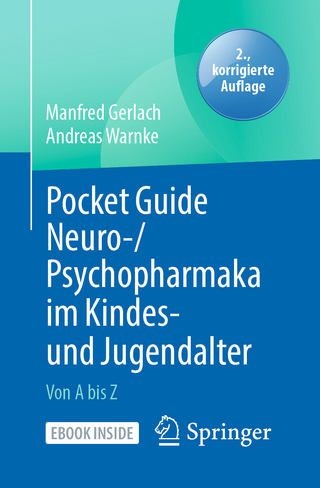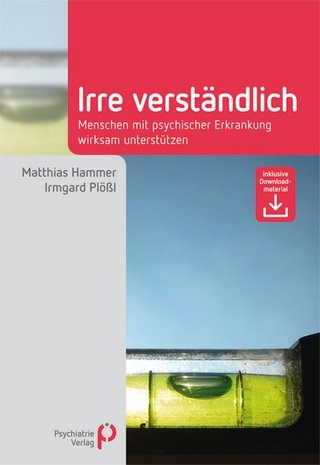
Textbook of Traumatic Brain Injury
American Psychiatric Association Publishing (Verlag)
978-1-61537-112-9 (ISBN)
Keeping pace with advances in the diagnosis, treatment, and science of TBI, the Textbook of Traumatic Brain Injury, Third Edition, comprehensively fills this gap in knowledge. Nearly all 50 chapters feature new authors, all of them experts in their field. Chapters new to this edition include biomechanical forces, biomarkers, neurodegenerative dementias, suicide, endocrine disorders, chronic disease management, and social cognition. An entirely new section is devoted to the evaluation and treatment of mild TBI, including injuries in athletes, military service members and veterans, and children and adolescents. These chapters join newly updated sections on the assessment and treatment of the cognitive, emotional, behavioral, and other physical sequelae of TBI.
The Textbook of Traumatic Brain Injury is a must-read for all of those working in any of the multitude of disciplines that contribute to the care and rehabilitation of persons with brain injury. This new volume is also a potentially useful reference for policymakers in both the public and private sectors.
Jonathan M. Silver, M.D., is Clinical Professor of Psychiatry at New York University School of Medicine in New York, New York. Thomas W. McAllister, M.D., is Albert Eugene Sterne Professor and Chair in the Department of Psychiatry at Indiana University School of Medicine in Indianapolis, Indiana. David B. Arciniegas, M.D., is Chief Medical Officer of the Center for Mental Health in Montrose, Colorado; Director of Education for the Marcus Institute for Brain Health in Aurora, Colorado; Clinical Professor of Neurology and Psychiatry at the University of Colorado School of Medicine in Aurora, Colorado; Senior Scientist of the Brain Injury Research Center at TIRR Memorial Hermann in Houston, Texas; and Chairman and CEO of the International Brain Injury Association in Richmond, Virginia.
Foreword
Preface
Part I: Epidemiology and Pathophysiology
Chapter 1. Epidemiology of Traumatic Brain Injury
Chapter 2. Biomechanical Forces Involved in Brain Injury
Chapter 3. Pathophysiology
Part II: Assessment
Chapter 4. Neuropsychiatric Assessment
Chapter 5. Clinical Imaging
Chapter 6. Genetic Factors
Chapter 7. Electrophysiological Assessment
Chapter 8. Neuropsychological Assessment
Chapter 9. Biomarkers
Part III: Neuropsychiatric Aspects of Traumatic Brain Injury
Cognition
Chapter 10. Disorders of Consciousness
Chapter 11. Acute Traumatic Encephalopathy
Chapter 12. Neurocognitive Disorders Due to Traumatic Brain Injury
Chapter 13. Awareness of Deficits
Chapter 14. Social Cognition
Chapter 15. Neurodegenerative Dementias
Emotion
Chapter 16. Epidemiology and Natural History of Psychiatric Disorders
Chapter 17. Mood and Anxiety Disorders
Chapter 18. Emotional Dyscontrol
Chapter 19. Posttraumatic Stress Disorder
Behavior
Chapter 20. Disorders of Diminished Motivation
Chapter 21. Behavioral Dyscontrol
Chapter 22. Psychotic Disorders
Chapter 23. Suicide
Somatic
Chapter 24. Sleep Disturbance and Fatigue
Chapter 25. Posttraumatic Headache
Chapter 26. Dizziness, Imbalance, and Vestibular Dysfunction
Chapter 27. Vision Problems
Chapter 28. Chronic Pain
Chapter 29. Sexual Functioning
Chapter 30. Pituitary Dysfunction
Chapter 31. Posttraumatic Epilepsy
Part IV: Special Populations and Issues
Mild Brain Injury
Chapter 32. Overview of Mild Brain Injury
Chapter 33. Pathophysiology of Mild Traumatic Brain Injury
Chapter 34. Assessment of Sports-Related Concussion
Chapter 35. Military Mild Traumatic Brain Injury
Chapter 36. Mild Traumatic Brain Injury in Children and Adolescents
Chapter 37. Multidisciplinary Assessments and Treatment
Chapter 38. Persistent Symptoms After Mild Traumatic Brain Injury
Other Populations
Chapter 39. Neuropsychiatric Sequelae of Traumatic Brain Injury in Children and Adolescents
Chapter 40. Chronic Disease Management for Lifelong Brain Injury
Chapter 41. Substance Use Disorders
Part V: Treatment
Chapter 42. Family Intervention
Chapter 43. Systems of Care
Chapter 44. Activity, Participation, and Community Integration
Chapter 45. Psychological Adjustment to the Effects of a Moderate to Severe Traumatic Brain Injury
Chapter 46. Cognitive Rehabilitation
Chapter 47. Environmental and Behavioral Management
Chapter 48. Principles of Pharmacotherapy
Chapter 49. Complementary and Alternative Therapies
Chapter 50. Clinical Legal Issues
| Erscheinungsdatum | 23.03.2019 |
|---|---|
| Zusatzinfo | 73 Figures; 5 Plates, black and white; 113 Tables, unspecified |
| Verlagsort | VA |
| Sprache | englisch |
| Maße | 178 x 254 mm |
| Themenwelt | Medizin / Pharmazie ► Medizinische Fachgebiete ► Psychiatrie / Psychotherapie |
| ISBN-10 | 1-61537-112-5 / 1615371125 |
| ISBN-13 | 978-1-61537-112-9 / 9781615371129 |
| Zustand | Neuware |
| Haben Sie eine Frage zum Produkt? |
aus dem Bereich


